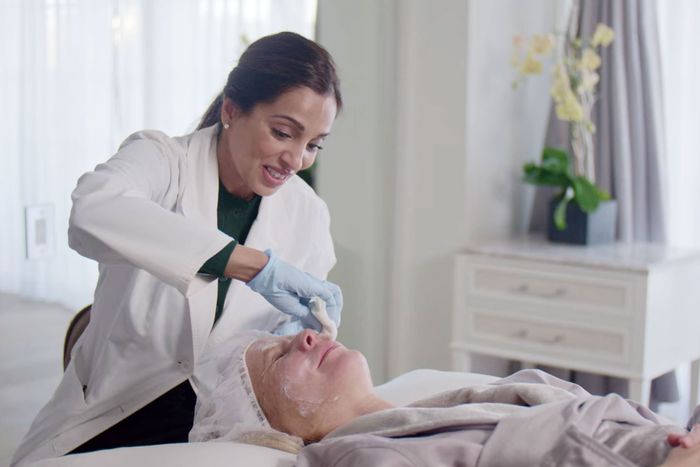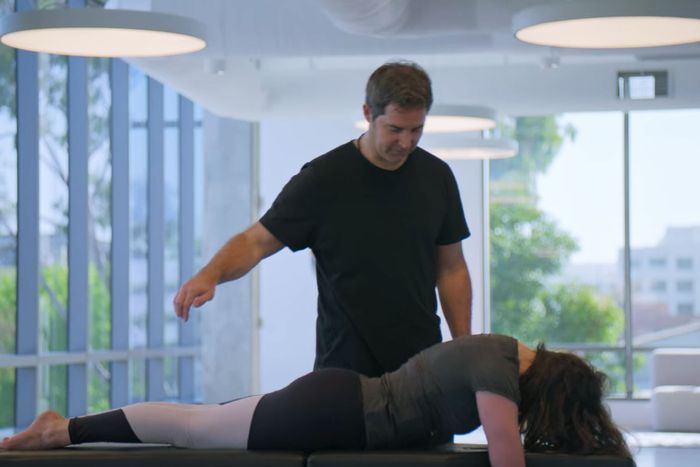
Each episode of The Goop Lab begins with a disclaimer: “The following series is designed to entertain and inform — not provide medical advice.” And to be sure, that warning fits its innocuous tenor. The Netflix show is more of a cheeky, let’s-try-this-out kind of affair than the transparently insidious jade egg sales pitch many feared.
But as much as The Goop Lab, and Goop as a company, couches itself in a healthy skepticism about accepted scientific wisdom, it’s important to recognize the show’s topics for what they are — or more accurately, what they are not: medicine. Even as The Goop Lab refrains from explicitly hawking its own products, the various wellness techniques Goop founder Gwyneth Paltrow and her phalanx of staffers engage in each episode are worth greater scrutiny.
Below, I’ve attempted to distill the scientific consensus on the major wellness claims in The Goop Lab as succinctly and accurately as I can. And not every episode merits rigorous debunking: “The Pleasure Is Ours,” for instance, is a harmless, reasonable exploration of the importance of sexual health. But where shenanigans arise, shenanigans shall be called out. Let’s dive in, shall we?
Psilocybin therapy (from “The Healing Trip”)
The Goop Lab starts on a fairly solid scientific note: The first episode deals with the healing potential of psychedelics like mushrooms and MDMA in treating conditions like depression, anxiety, and PTSD. There’s a modest amount of scientific study to support these conclusions. According to Psychology Today, psilocybin (the active ingredient in magic mushrooms), has seen promising, though not dramatic, results in clinical trials.
But as much as psilocybin therapy seems to have some positive effects for patients in the short term, its relative newness in the medical field leaves it open for ethical concerns. Even the experts in the episode stress that this kind of psychedelic therapy must be done under the strictest controls, in the right environment, and with proper medical supervision. But since those disclaimers are made clear and no one in the episode seems coerced, Goop Lab gets a pass for this one.
The Wim Hof Method (from “Cold Comfort”)
Dutchman Wim “Iceman” Hof is renowned for setting world records for withstanding ice-cold temperatures, which has led him to package his body-training techniques into something he calls the “Wim Hof Method.”
At its core, the Wim Hof method seems like a repackaging of traditional yoga methods of deep breathing and meditation, combined with cold therapy, into a Western-friendly pseudo-spiritual experience that purports to battle stress and even fend off illness. Hof, for his part, acts like a charismatic guru, leading the Goop staffers through cathartic experiences — group breathing exercises in an idyllic Lake Tahoe cabin, affirmations to face their fears and jump into ice-cold water — that seem as much fueled by his warm, involving persona and wild claims of “opposing the elements of nature” as it does the actual techniques on display.
But while Hof has invited scientists to study him, findings are hardly conclusive, and it’s important to remember that anecdotal evidence is not the same thing as scientific proof, and any scientific studies that have been conducted on the Wim Hof method have not been sufficiently replicated to support his claims.
Vampire facials (from “The Health-Span Plan”)
The fourth episode of Goop Lab tackles a lot of different things, from tests to determine “biological age” to various types of diets and cleanses, all of which have their own levels of dubiousness in terms of scientific validity.
But the wildest trial comes when Paltrow undergoes a “vampire facial” — a trendy new skin-care treatment popularized by Kim Kardashian West that involves taking blood from your body, spinning it around in a centrifuge to separate the red blood cells from the platelets and plasma, then basically reinjecting the plasma into your face with a bunch of tiny needles.
The idea is that the platelet-rich plasma (PRP) contains proteins and nutrients that promote cell renewal and collagen growth. Plus, by injecting it in hundreds of little holes in your skin, the PRP can seep into deeper layers of the skin, thus theoretically making you look younger.
Although some dermatologists claim to believe that PRP might have the potential to aid in acne scars and wrinkles, its effective lack of regulation — especially in states like New Mexico, where many wealthy Angelenos go to get their blood facials — makes it a dangerous prospect. Last year, one Albuquerque spa was shut down for operating their vampire facial service in a way that exposed people to blood-borne infections like HIV and hepatitis B and C. So not only is the science not out on vampire facials, it’s dangerously easy to get sick from their malpractice.
Energy healing (from “The Energy Experience”)
Maybe the most stealthily dangerous thing about The Goop Lab is that the six episodes are front-loaded with unconventional therapies that have at least been the subject of legitimate research — like cold therapy, meditation, and psychedelics — only to devolve into outright quackery in its last two entries.
First, there’s the concept of “energy healing,” in which Paltrow’s go-to healer John Amaral “heals” people by adjusting their energies, which in practice looks like a combination of chiropractic and spiritual puppeteering. Patients sit on a massage table and he moves his hands over their bodies, only for them to move and undulate in ways that, as one Goop staffer notes, look and feel not unlike an exorcism. (Read: placebo.)
Really, that’s your first clue that energy healing is a whole lot of mumbo jumbo. Amaral claims his work operates on the basis of quantum physics and the “double-slit experiment,” which are vague enough terms that they feel scientific without actually tying into scientific practice.
As for the double-slit experiment, that’s a principle relating to the measurability of photon trajectory, and it has never been used in the context of healing or medical science. Scientific American points out that quantum mechanics is “one of the most challenging to comprehend and one about which a great deal of nonsense has been written.” In the case of Amaral’s work, that principle certainly seems to apply.
Extra-sensory perception (from “Are You Intuit?”)
The Goop Lab’s final episode involves psychic medium Laura Lynne Jackson doing old-fashioned psychic readings of the Goop staff. There’s no attempt to claim any health benefits, per se; it’s just an old-school psychic doing cold readings on Goopers to make them believe they’re talking to dead relatives. It doesn’t even try to pretend to be anything other than a lark.
But it’s disconcerting to see the show tack this one on at the end of a series of episodes purporting to use alternative treatments to make real, positive changes in your life. Is The Goop Lab claiming the first five episodes are all fun and games? Or does it want you to think psychic readings have the same basis of scientific validity as psychedelic treatments and deep breathing?
After all, there is science behind why people believe in psychics and other matters of the paranormal: Studies have shown gulfs in the application of critical thinking between believers and skeptics. The vague nature of psychic readings plays on something called the Barnum effect, where people are more likely to think generalized descriptions apply specifically to themselves.
That’s where The Goop Lab both refreshes with its candor and alarms with its allure. Sure, it’s refreshing that Paltrow and her Goopers don’t outright claim these things will work for you or make your life better. It’s a show “designed to entertain and inform,” after all. But in mixing the almost proven with the downright absurd, they create a false equivalence that might prove dangerously appealing to the overly credulous. By all means, watch and enjoy The Goop Lab, and delight in the genuinely empowering episode on female sexual health. As for the rest, just know what you’re getting into.






